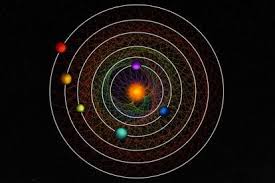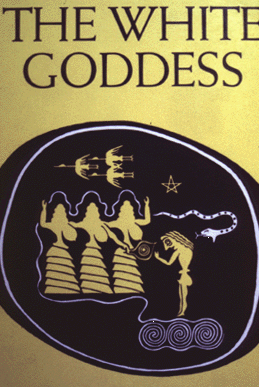The Planets

The origins and meanings of the symbols for the Sun, Moon and planets are as shrouded in mystery as Venus itself. Certainly the Earth and Sun (and perhaps the Moon) look like shields and Mars is a shield with a spear. Some say Mercury's symbol shows his winged cap above and caduceus staff below and others see Venus as the goddess of love's hand mirror. But really the only obvious one seems to be Neptune - the trident. Here they are:










This chapter looks at the association between the Sun (Christ) and the Moon (Virgin Mary). Of all the writers who have tackled this, Robert Graves was one of the most interesting. Not just for what he said as for what happened to his ideas.

In The White Goddess (1948), Graves celebrated an ancient mythic moon goddess:
As Goddess of the Underworld she was concerned with Birth, Procreation, and Death. As Goddess of the Earth she was concerned with the three seasons of Spring, Summer, and Winter: She animated trees and plants and ruled all living creatures. As Goddess of the Sky she was the Moon, in her three phases of New Moon, Full Moon, and Waning Moon.
Graves argued that the White Goddess still resides in the demonic power of poetry and myth. Playfully, he pointed out that this was something that traditionalist academics wouldn't be able to understand. They didn't, of course, and not just because it was a man saying it. Decades later we still have irritated feminists who see the masculine ego at work. Also, the fact that Graves was idealizing "White" women just led inevitably to somebody coming out with the Dark Side of the Moon, a Dark Goddess, while others decided that the Sun was an equally worthy target - why should that be male? Could Mars be redeemed as feminine? And then there's Venus...
Other Graves brief mentions: here and here and here
Also see:
Below: Graves' White Goddess... Laura Riding. Some say he got (stole) all his great ideas from her.

